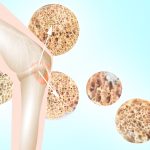If you are bothered by burning pain, or a tingling ‘pins and needles” numbness in one or both of your hands, the chances are good that you are feeling the effects of a condition physicians refer to as Carpal Tunnel Syndrome (familiarly CTS).
The Median Nerve serves the first 3 1/2 fingers of each hand.
Typically, this problem will awaken you at night, and may be accompanied by an ache in the elbow or shoulder. Shaking your hand relieves the symptoms at first, but may not work after awhile. The carpal tunnel of your wrist (see diagram) contains a nerve called the “median nerve.” If you have a condition that leads to swelling of a wrist, the swelling may in turn pinch the median nerve and thereby bring about CTS. Obesity might bring on CTS; so might pregnancy, rheumatoid arthritis, diabetes, thyroid problems, and the use of birth control pills.
The Median Nerve lies within the carpal tunnel which also contains tendons (shown in white).
In most cases it's hard, if not impossible, to pinpoint a specific cause of CTS. Numerous cases result from the overuse of wrists in activities such as keyboard work, playing Guitar, knitting, prolonged driving, or work related-duties. CTS is just one of many so-called Repetitive Strain Injuries (RSI). If your symptoms are mild, and you pay attention to them right away, you may be able to clear up the symptoms simply by pampering the affected wrist. If that presents problems, because of the nature of your work or your daily habits, your doctor may recommend you try a wrist support. Although it is sometimes called a “night splint”, this support can be worn day and night as long as you remove it a several times a day to exercise the wrist. Many types of wrist immobilizers are available over-the-counter at the pharmacy or a surgical supply company. The best kind of splint will keep the wrist in a straight line with the arm so that the hand is not angled up or down.
Treatment should always include therapy to improve flexibility and strength. A daily program of stretching and resistance exercises are helpful. Physical Therapy is a more intense form of rehabilitation that is sometimes able to help one delay or avoid surgery. Massage Therapy is also useful and can be done on yourself (with a little training – see references below) if you can't afford to see a therapist. The best type of massage therapy involves Myofascial Release techniques and Neuromuscular Therapy. It's also very important to pay attention to your work station ergonomics and make appropriate changes to avoid angling your wrists away from a neutral alignment as much as possible.
The use of non-cortisone anti-inflammatory drugs may be necessary to reduce the swelling and inflammation often seen in CTS. Taken for a brief 1-3 week course, these agents (e.g. Motrin, Naprosyn, Clinoril) are usually safe and well-tolerated. The potential for stomach upset require that these be taken with food but should be avoided in those who suffer from ulcers, heart failure, kidney disease or aspirin sensitivity. Even though these types of medicines are now available over-the-counter, I recommend checking with your physician before using them for treatment of CTS. In some cases, the doctor may prescribe a short course of cortisone tablets or diuretic (“water pill”) therapy, especially in cases where a patient is retaining fluid.
If the symptoms persist for a long period of time, and especially if they include weakness or wasting of the hand muscles, we may use a test, called a nerve conduction study, to confirm the diagnosis.This may be in addition to some routine laboratory tests to check your general health. A cortisone injection near the median nerve is sometimes done to try and relieve the swelling before contemplating surgery. As a last resort, there is relatively minor outpatient surgical procedure available to release the thickened transverse carpal ligament and thus ease the tension on the affected median nerve. Surgery is necessary in advanced cases, when the hand muscles are weakened by nerve damage. Most cases, however, if diagnosed early, can be treated by less aggressive measures.
In Summary, Carpal Tunnel Syndrome is at best an annoying condition, and at worst one that is painful and capable of causing significant disability and inability to function in ones chosen occupation. There are many things you can do to control this problem without having to resort to long-term use of medications or surgery. The BEST treatment is education. So please read all you can and become an informed patient. This will help insure your successful treatment.
1. Rest the hand that's giving you trouble as much as possible. The surest way is to wear your wrist support, as annoying as that may be.
2. Try to stretch and exercise the wrist daily but be careful not to overdo it. Pain is your best sign that you are not doing the exercises correctly. Try self-massage regularly. Follow specific guidelines (see references) for stretching, exercise, and massage.
3. If your doctor has prescribed anti-inflammatory drugs, follow the label directions carefully. Unless you've got your doctor's approval, avoid taking aspirin at the same time as you use them.
4. If you feel the pain getting worse from one day to the next over the course of several days, or if you detect weakness in the affected muscles, report these symptoms to your doctor.
5. Stress seems to play a role in many RSI's. Work on developing a positive outlook.
6. Stop smoking if at all possible. Smoking deprives injured tissues the oxygen needed for self-repair and can significantly slow down or prevent healing.
See also Mouse Ergonomics








